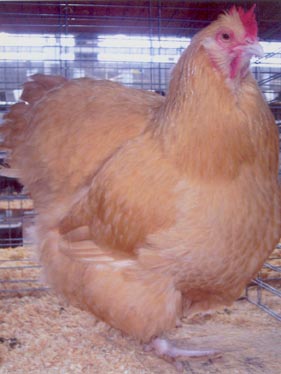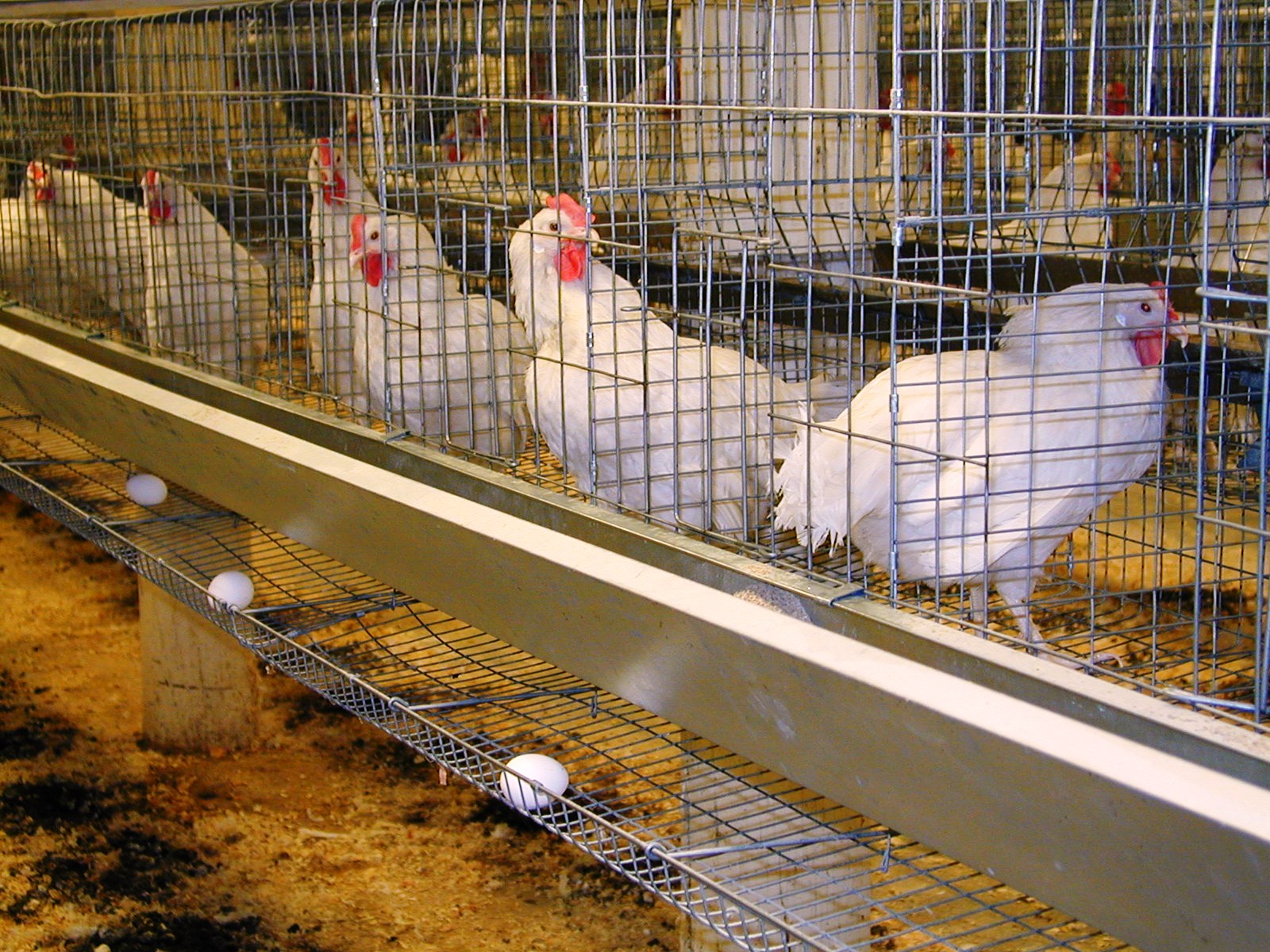 |
||||||||||||||||||||||||||||||||||||||||||||||||||||||||||||||
| Major Activities |
Poultry :: Chicken :: Grower & Layer Management |
|||||||||||||||||||||||||||||||||||||||||||||||||||||||||||||
Care of Laying BirdsHousingAt 18 weeks of age all under grown pullet chicks are to be culled and disposed off. Careful selection at the time of housing enables better returns and fewer culls later. The stock can either be reared in the same house where it was grown or transferred to laying house. Optimum housing density should be maintained for best utilization of house, equipment and labour. Provide 65 feet of floor space per egg type bird. Nest boxes must be introduced to laying house two weeks prior to the onset of lay to help birds to get used to nest. The nests should be roomy, dark, cool, well ventilated and located on one side of the building. Nest boxes made of cheap deal wood, measuring 30 x 30 x 40 cm each may be provided at the rate of one box for every five hens. Clean nesting materials should be placed inside the nest boxes and the nesting materials should be changed periodically. If needed, top-dress the litter with new material.
Laying Bird Light: Use correct lighting schedule to ensure better performance. While light period should not be increased for growing birds, it would be advantageous to increase the light period or photoperiod for laying chicken from 22nd week of age onwards at the rate of 15 minutes per week so as to reach 16 hours of total photoperiod (natural plus artificial). When the birds have been in lay for about 6 months, the photoperiod may be increased to 17 hours per day. The light period may be constantly maintained throughout the rest of laying period. There is no special advantage in increasing the photoperiod over 17 hours per day. The lighting programme, if started, should be followed systematically. Feeding: A good quality layer mash should be provided to the laying birds.
The feed may be given in linear feed troughs or in hanging feeders. Provide five hanging feeders, each 50 cm in diameter with 20 – 25 kg capacity for 100 layers. Place the feeders within 3 meters of water. Stir the feed few times a day to promote eating. Water space of 2.5 linear cm per bird should be provided. Increase watering space 25% when temperature goes above 27oC. The feeders in the laying pen must be positioned in such a way that the upper edge is slightly higher than the back of the birds. The feeders should not be filled more than 1/3 full. Cage Layer ManagementThe advantages of cage rearing are easy management, housing of more number of birds in limited space, clean egg production, less problem due to parasites and other diseases, easier culling, etc. Some of the disadvantages include high initial investment, wet dropping, odour and fly problem. To offset these problems, elevated cage houses are useful.
Four birdcages are ideal for commercial layers. The specification of a 4 bird cage is as follows.
Since there are two different measurements in height, the floor of the cage will have a slope towards front. Most material for laying cage floors is welded wire fabric. Sometimes the wire is coated with plastic. Most cage floors are constructed of 14 gauge wire to give necessary strength. Usually cage floors are constructed of wire with a mesh size of 2.5 x 5.0 cm (1 x 2"). The wire floor should be extended past the front of the cage for 18 cm and rounded up so as to collect the eggs there. To conserve space, thereby reducing the investment in the house in which the laying cages are placed, many methods have been developed to house birds in a given area. Single-deck, double-deck or triple-deck arrangement can be adopted. The floor of the cage should be about one meter higher than the ground level. In order to collect the droppings from the cages a shallow pit at a depth of 30 cm from the floor level at length-wise just under the cages may be constructed. Long, continuous troughs are used for feeding caged layers. Water is supplied by channel running the length of the cage unit. The water channel is usually placed above the feed trough outside the cage. Instead of water channel, nipple drinkers can also be provided. Birds should be dewormed once in every 3 months. Breeder management: Breeding birds are reared for the production of hatching eggs. Care should be taken to produce maximum fertile eggs that hatch well. For this purpose males should be reared separately from the females during the growing period. Breeder males should be introduced to the flock of females at 20 weeks of age in the ratio of 1 : 8 for heavy breeds and 1:10 for light breeds. Hatching eggs can be saved from the age of 24 weeks onwards. The birds must be kept free of Pullorum disease and Mycoplasmosis. Breeding birds should be given breeder mash or a layer mash supplemented with MnSO4, Choline Chloride, Selenium, Vit. E, Lysine and Methionine as per standards. Feed restriction in meat type breeders: Meat type breeders have the inherent ability to grow faster. There is a negative correlation between the body weight and reproductive capacity. Hence top priority should be given to control the body weight of broiler breeders during growing and laying phases so as to get maximum production and profit. Advantages of feed restriction
Methods of feed restrictionThere are two methods of feed restriction
The weekly body weight record is the main criterion for the feed restriction programme. So sample of birds should be weighed on weekly basis and this weight can be compared with that of the standards for those particular breeds. If the body weight is below the standards the feed allotments must be increased. Culling: Year round culling of unproductive stock will fetch better profit. Culling is based on physical characters, which reflect the physiological changes related to egg production. Culling for better returns Culling from outward Appearance
Culling on the Basis of Moulting: Laying flocks are generally to be liquidated after one year of production, since keeping them longer into second year of production may be uneconomical. If there is any outbreak of vertically transmitted diseases, like salmonellosis, total culling is recommended. Care of eggs: Eggs produced under clean conditions are most profitable. To produce table eggs keep males out of flock. Fertile eggs deteriorate more quickly than infertile eggs. Provide clean good litter material in the nest boxes. Collect eggs as frequently as possible at least 3 times a day and keep them cool until they are disposed off. In warm weather increase collection to four or five times a day. Handle eggs carefully. Collect the eggs in clean filler flats or in well-ventilated wire plastic baskets. Market eggs frequently. If the percentage of dirty eggs is more, check the management of layer house and take corrective measures.
Summer management: Chickens prefer a laying house temperature of about 23.8oC and are comfortable up to 29.4oC. When the laying house temperature is above 32.3oC, birds are uncomfortable and the feed consumption is greatly reduced with low egg production. Over 37.8oC, the mortality rate is rather high. Coupled with these, the farmer often faces low egg prices also. Therefore adequate protection of laying birds during hot weather is emphasized. The following tips are recommended to keep the birds comfortable and to curtail deaths during summer months.
(Source: www.vuatkerala.org ) | ||||||||||||||||||||||||||||||||||||||||||||||||||||||||||||||
Technologies |
||||||||||||||||||||||||||||||||||||||||||||||||||||||||||||||
Veterinary Services |
||||||||||||||||||||||||||||||||||||||||||||||||||||||||||||||
| Home | Success Stories | Publication | Gallery | Forms | FAQs | Related Links | Contact | |
||||||||||||||||||||||||||||||||||||||||||||||||||||||||||||||
| © All Rights Reserved. TNAU-2008. |
||||||||||||||||||||||||||||||||||||||||||||||||||||||||||||||

